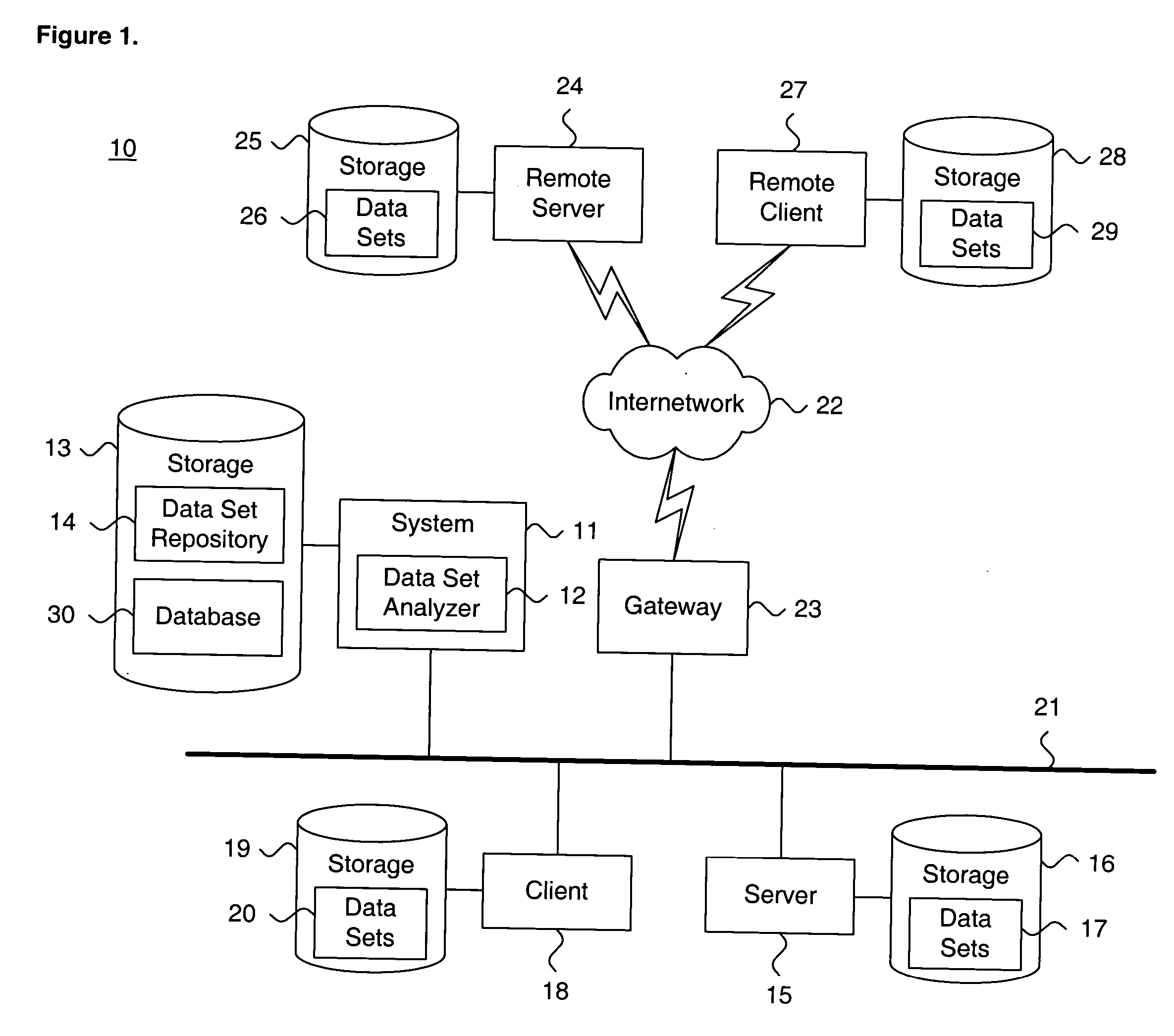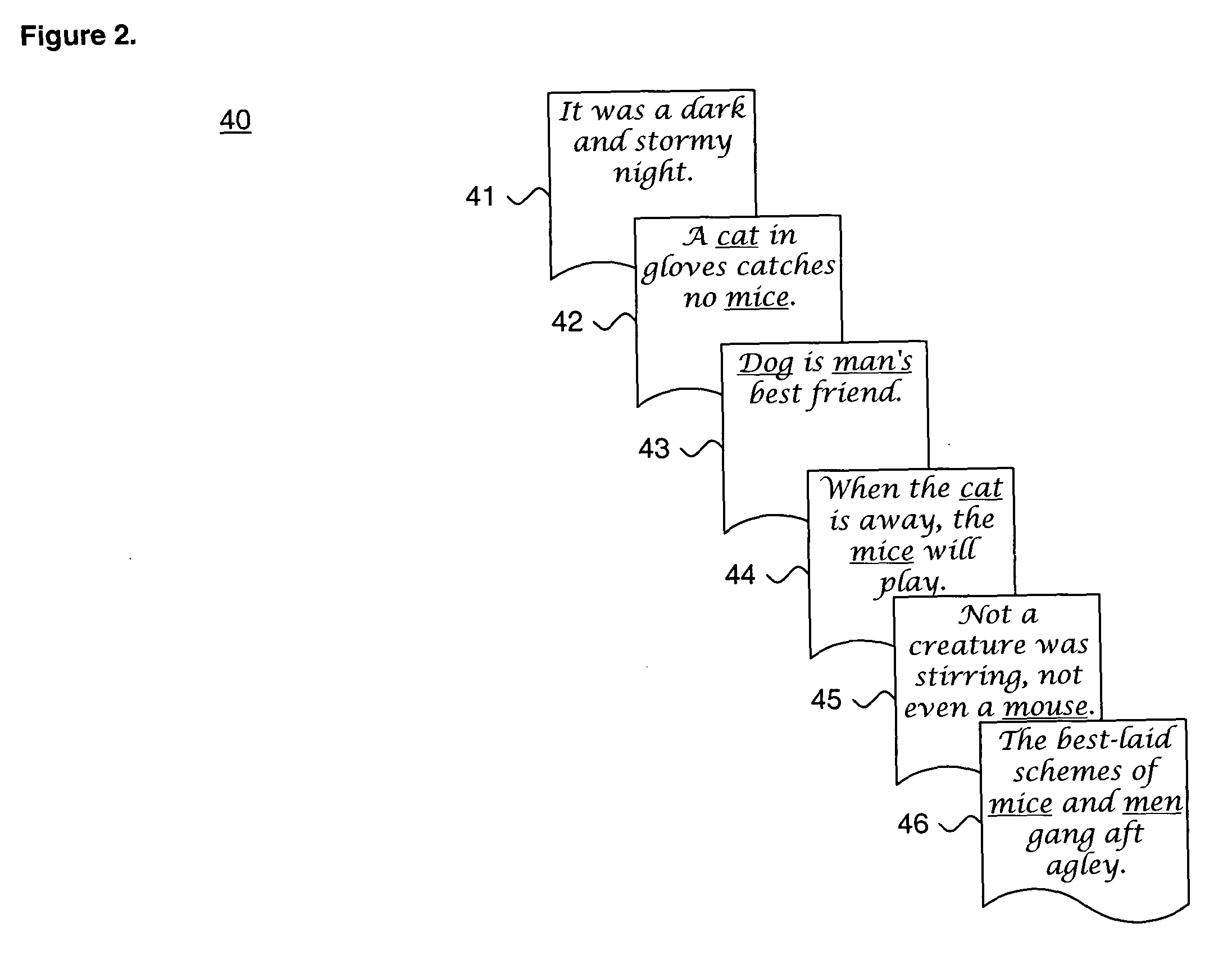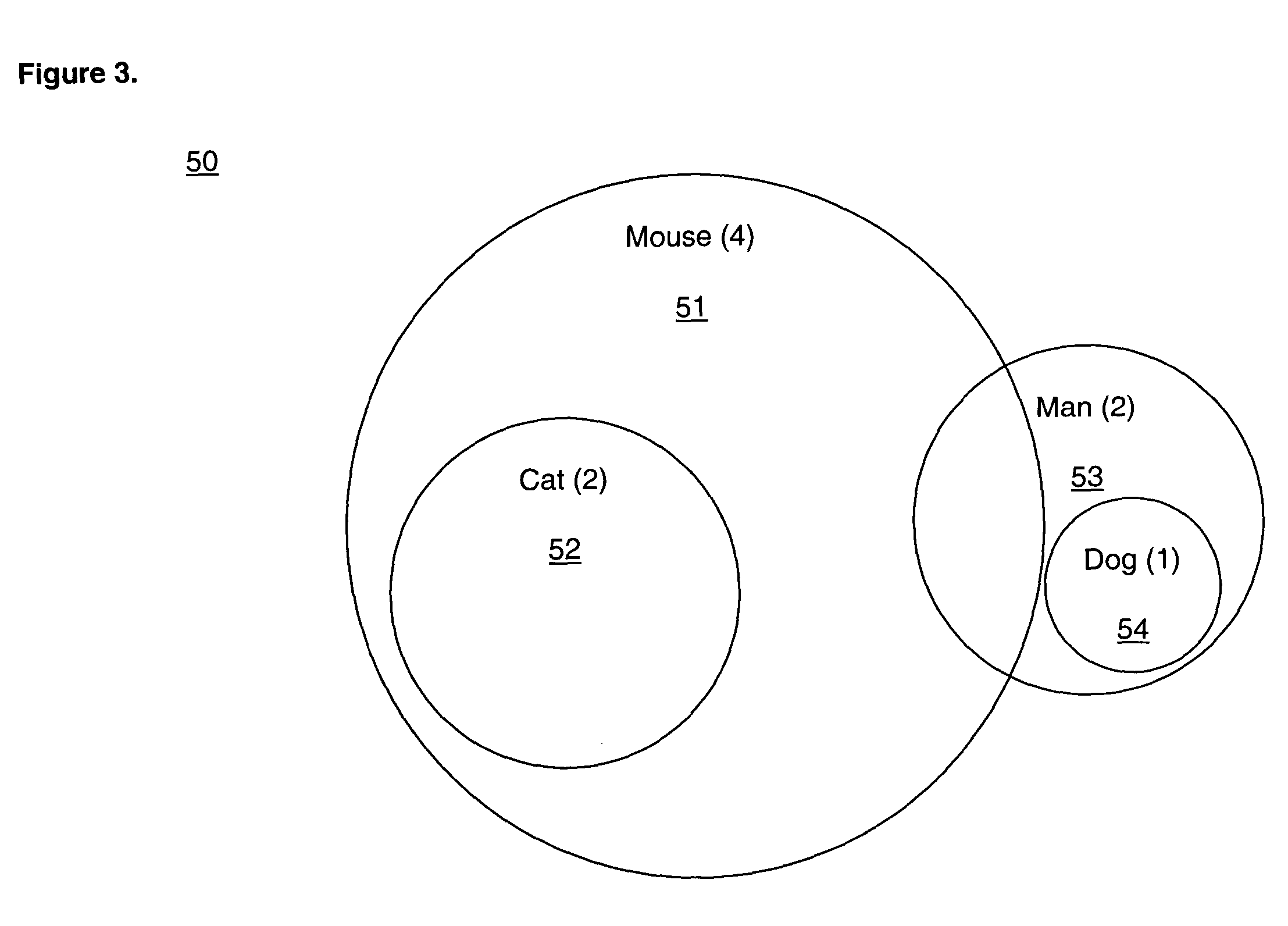System and method for identifying critical features in an ordered scale space within a multi-dimensional feature space
- Summary
- Abstract
- Description
- Claims
- Application Information
AI Technical Summary
Benefits of technology
Problems solved by technology
Method used
Image
Examples
Embodiment Construction
Glossary
[0037] Document: A base collection of data used for analysis as a data set.
[0038] Instance: A base collection of data used for analysis as a data set. In the described embodiment, an instance is generally equivalent to a document.
[0039] Document Vector: A set of feature values that describe a document.
[0040] Document Signal: Equivalent to a document vector.
[0041] Scale Space: Generally referred to as Hilbert function space H.
[0042] Keyword: A literal search term which is either present or absent from a document or data collection. Keywords are not used in the evaluation of documents and data collections as described here.
[0043] Term: A root stem of a single word appearing in the body of at least one document or data collection. Analogously, a genetic marker in a genome or protein sequence
[0044] Phrase: Two or more words co-occurring in the body of a document or data collection. A phrase can include stop words.
[0045] Feature: A collection of terms or phrases with com...
PUM
 Login to View More
Login to View More Abstract
Description
Claims
Application Information
 Login to View More
Login to View More - R&D
- Intellectual Property
- Life Sciences
- Materials
- Tech Scout
- Unparalleled Data Quality
- Higher Quality Content
- 60% Fewer Hallucinations
Browse by: Latest US Patents, China's latest patents, Technical Efficacy Thesaurus, Application Domain, Technology Topic, Popular Technical Reports.
© 2025 PatSnap. All rights reserved.Legal|Privacy policy|Modern Slavery Act Transparency Statement|Sitemap|About US| Contact US: help@patsnap.com



